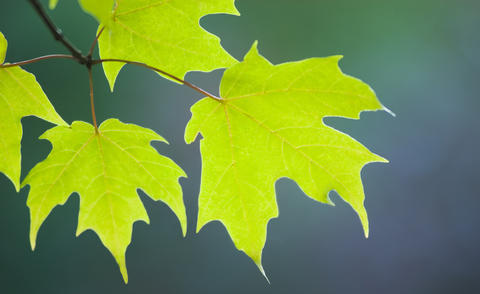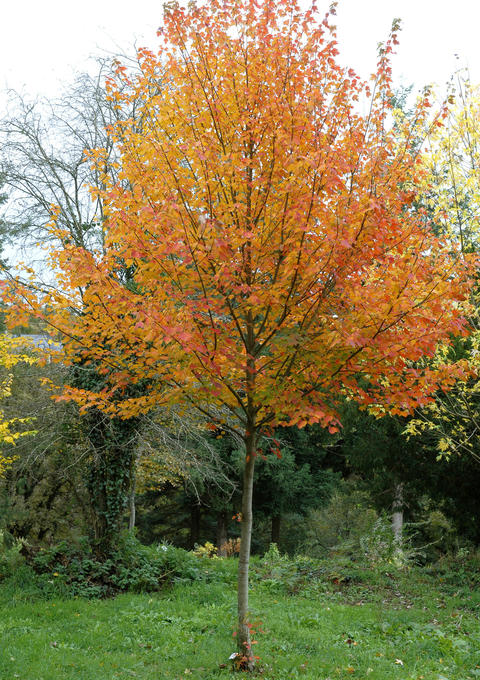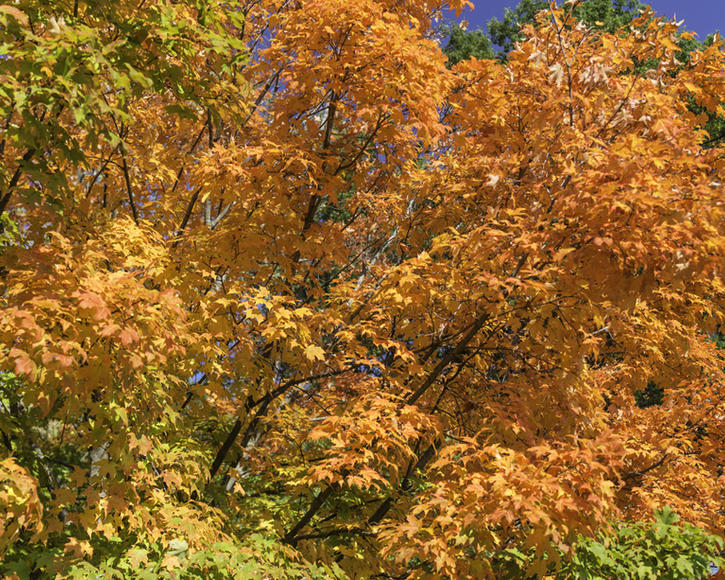Sugar Maple
Sugar Maple is not only used to make maple syrup, it is also an attractive tree with a beautiful fall color. How to plant and care for it.
Factsheet
- Growth type
-
- Main Tree
- Growth height (from)
- from 1500 cm to 2000 cm
- Growth width (from)
- from 400 cm to 800 cm
- Growth characteristics
-
- upright
- Flower color
-
- green
- yellow
- Flowering time (month)
-
- April
- Flower shape
-
- Trumpets
- Flower characteristics
-
- unimpressive
- Leaf color
-
- green
- page format
-
- 3-5 lobes
- lobbed
- pointed
- Sheet properties
-
- Autumn coloring
- Fruit shape
-
- nut fruit
- Light
-
- sunny to shady
- Soil type
-
- sandy to loamy
- Soil Moisture
-
- fresh to humid
- ph value
-
- neutral to weakly acidic
- Nutrient requirements
-
- moderately nutritious to nutrient-rich
- Decorative or utility value
-
- Leaf ornaments
- picturesque growth
- Nectar or pollen plant
- Winter Hardness
-
- hardy
- Climate zones according to USDA
-
- 5
- Use
-
- Single position
- Landscape woody plants
- Street greening
- Garden style
-
- natural garden
- Park area
Sugar Maple (Acer saccharum) is native to Eastern North America, occurring in highlands and valleys on fresh to moist soil. The tree is economically important in the region today as it is used for the production of Maple Syrup and for timber. A stylized, red maple leaf even adorns the Canadian flag. Botanically, it belongs to the Soapberry family (Sapindaceae).
Sugar maple is a deciduous, medium-sized to large tree with an oval to round crown. Acer saccharum grows approximately 10 to 14 inches taller and 10 to 12 inches wider each year. Over the decades, sugar maple can grow 50 to 65 feet tall in this country, while in its natural habitat specimens may even reach heights of up to 100 feet. It generally grows 13 to 26 feet wide in these parts. While the bark has a gray-brown color, the branches are brown to greenish brown. The maple has a shallow, spreading root system that develops many fine roots.
The green leaves of the Sugar Maple have three to five lobes, are oppositely arranged, and 3.15 to 5.91 inches wide. They look similar to the leaves of Norway Maple, however, unlike that species, they do not contain a milky sap. The foliage looks particularly impressive in fall: the leaves turn a yellow-orange to fiery red-orange color, allowing the sugar maple to play its part in the "Second Summer" in North America.

The flowers of Sugar Maple appear just before the leaves sprout in April in umbels on long, thin, and hairy stalks. They are somewhat inconspicuous with their yellow-green color.
The fertilized flowers produce little nut fruits during the summer. The wings are almost parallel or acute-angled.
The Sugar Maple does not have any specific requirements in terms of location: It thrives in the sun, but can also tolerate shade without any problems.
Sugar Maple feels most at home in well-drained soil that can retain moisture. The tree is tolerant of different pH levels but thrives in slightly acidic soils. And very important: Sugar Maple needs plenty of root space.
Plant Sugar Maple in spring or fall where possible – the temperatures are relatively mild at this time and the rainfall gets the tree off to a good start. The planting hole should be at least twice as big as the root ball. Use a garden fork to loosen the sides and bottom of the hole so that the fine roots can spread without any interference. It’s also advisable to support sugar maple by putting a stake next to it. Water the tree thoroughly after planting. To protect the roots from drying out, you can also apply a layer of Bark mulch under the tree as ground cover.
In its early years, it is advisable to give sugar maple plenty of water during dry periods and to fertilize in spring with horn shavings or mature compost. A note of caution: Never use a hoe as this could damage the shallow roots. Acer saccharum is very hardy once well established.
Just like its relatives, Sugar Maple looks best without pruning. Nevertheless, if you do want to prune the tree, you can make small adjustments in summer.

Sugar Maple is perfect for planting on its own in large gardens and parks. It also makes a good street tree. It attracts plenty of attention in fall with its bright leaves. Until the introduction of sugar beet, the Sugar Maple was an important source of sugar in North America and Canada. The sugary sap is still very popular today in the form of Maple Syrup. To get the sap, maple trees that are at least 40 years old are tapped at the end of February. 40 to 50 liters of sap can be extracted from a tree each year. Acer saccharum also provides hard wood that is good for processing. It is used for furniture manufacturing, among other things.
Acer saccharum ‘Brocade’ is a variety with a golden yellow fall color. The leaves of the variety ‘Legacy’ turn red to orange-red in fall, while those of ‘Seneca Chief’ are yellow and orange.
The species can be propagated by seed. However, Sugar Maple can also be propagated by layering, cuttings, or grafting.
If Sugar Maple is happy where it is, it tends not to be affected by diseases or pests. It is important that the soil is not too heavy or waterlogged. Leaves that wilt quickly, cracked bark, or branches that dry out may indicate a fungal disease. Acer saccharum is occasionally affected by aphids and spider mites.

